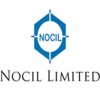Filter interviews by
Chemplast Sanmar Costing Executive Interview Questions and Answers
9 Interview questions
Cost accounting standards are guidelines for measuring, assigning, and allocating costs in a consistent manner.
Cost Accounting Standard 401: Determination of Reasonableness of Costs - Ensures that costs are reasonable and allocable to the contract.
Cost Accounting Standard 402: Consistency in Allocating Costs Incurred for the Same Purpose - Requires consistent allocation of costs for the same purpose.
Absorption and over absorption of overheads occur when actual overhead costs differ from the overhead costs absorbed into production.
Absorption of overheads occurs when actual overhead costs are absorbed into production based on a predetermined overhead rate.
Over absorption of overheads happens when the absorbed overhead costs exceed the actual overhead costs incurred.
Under absorption of overheads occurs when the ...
Cost accounting standards are necessary for ensuring consistency, transparency, and accuracy in financial reporting.
Ensure consistency in cost calculations across different organizations
Provide transparency in financial reporting for stakeholders
Help in accurate decision-making by management
Ensure compliance with regulatory requirements
Facilitate comparison of costs and performance within an industry
Examples: Cost...
Variance analysis is a technique used to compare actual costs to budgeted costs in order to identify differences and analyze the reasons behind them.
Variance analysis helps in understanding the reasons for deviations from the budgeted costs.
It involves comparing actual costs with standard or budgeted costs to determine the differences.
Variances can be favorable (costs lower than expected) or unfavorable (costs hig...
Budgetary control is a process of setting budgets, comparing actual performance against the budgets, and taking corrective actions to achieve financial goals.
Setting budgets for different departments or projects
Monitoring actual performance against the budgets
Analyzing variances and taking corrective actions
Helps in achieving financial goals and improving efficiency
Example: A company sets a budget for marketing ex...
SCA 104 is a standard costing method used in manufacturing industries to determine the cost of products.
SCA 104 stands for Standard Cost Accounting 104.
It involves setting predetermined costs for direct materials, direct labor, and overhead.
Variances are calculated by comparing actual costs to standard costs.
Helps in cost control and decision-making.
Example: If the standard cost for a product is $10 for direct mat...
Cost, costing, cost accounting, and cost accountancy are related to the process of determining and analyzing the expenses incurred in producing goods or services.
Cost refers to the amount of money spent on producing goods or services.
Costing is the process of determining the total cost of production by analyzing various cost components.
Cost accounting involves recording, classifying, and analyzing costs to help ma...
Cost sheet includes direct and indirect costs incurred in production.
Includes direct materials, direct labor, and manufacturing overhead costs
Indirect costs like factory rent, utilities, and depreciation are also included
Helps in determining total production cost and setting selling prices
Types of budgets include master budget, operating budget, financial budget, and static budget.
Master budget: comprehensive overview of all financial activities for a specific period
Operating budget: focuses on revenues and expenses related to the core operations of the business
Financial budget: projects cash flows, capital expenditures, and financing activities
Static budget: fixed budget based on a single level of...
Chemplast Sanmar Costing Executive Interview Experiences
1 interview found
I applied via Naukri.com and was interviewed in Jul 2024. There were 2 interview rounds.
(8 Questions)
- Q1. Recent updates on gst
- Ans.
Recent updates on GST include changes in tax rates, new compliance requirements, and updates on input tax credit rules.
GST rates have been revised for various goods and services.
New compliance requirements such as e-invoicing and QR code on invoices have been introduced.
Updates on input tax credit rules to prevent fraudulent claims.
Changes in GST return filing deadlines and procedures.
- Q2. What is budgetary control
- Ans.
Budgetary control is a process of setting budgets, comparing actual performance against the budgets, and taking corrective actions to achieve financial goals.
Setting budgets for different departments or projects
Monitoring actual performance against the budgets
Analyzing variances and taking corrective actions
Helps in achieving financial goals and improving efficiency
Example: A company sets a budget for marketing expense...
- Q3. What is variance analysis
- Ans.
Variance analysis is a technique used to compare actual costs to budgeted costs in order to identify differences and analyze the reasons behind them.
Variance analysis helps in understanding the reasons for deviations from the budgeted costs.
It involves comparing actual costs with standard or budgeted costs to determine the differences.
Variances can be favorable (costs lower than expected) or unfavorable (costs higher t...
- Q4. Why we need cost accounting standards
- Ans.
Cost accounting standards are necessary for ensuring consistency, transparency, and accuracy in financial reporting.
Ensure consistency in cost calculations across different organizations
Provide transparency in financial reporting for stakeholders
Help in accurate decision-making by management
Ensure compliance with regulatory requirements
Facilitate comparison of costs and performance within an industry
Examples: Cost Acco...
- Q5. Briefly explain any 2 cost accounting standards
- Ans.
Cost accounting standards are guidelines for measuring, assigning, and allocating costs in a consistent manner.
Cost Accounting Standard 401: Determination of Reasonableness of Costs - Ensures that costs are reasonable and allocable to the contract.
Cost Accounting Standard 402: Consistency in Allocating Costs Incurred for the Same Purpose - Requires consistent allocation of costs for the same purpose.
- Q6. Few resume based questions
- Q7. Strengths and weakness
- Q8. Elements of cost sheet
- Ans.
Cost sheet includes direct and indirect costs incurred in production.
Includes direct materials, direct labor, and manufacturing overhead costs
Indirect costs like factory rent, utilities, and depreciation are also included
Helps in determining total production cost and setting selling prices
(6 Questions)
- Q1. What is cost, costing, cost accounting and cost accountancy
- Ans.
Cost, costing, cost accounting, and cost accountancy are related to the process of determining and analyzing the expenses incurred in producing goods or services.
Cost refers to the amount of money spent on producing goods or services.
Costing is the process of determining the total cost of production by analyzing various cost components.
Cost accounting involves recording, classifying, and analyzing costs to help managem...
- Q2. Briefly explain SCA 104.
- Ans.
SCA 104 is a standard costing method used in manufacturing industries to determine the cost of products.
SCA 104 stands for Standard Cost Accounting 104.
It involves setting predetermined costs for direct materials, direct labor, and overhead.
Variances are calculated by comparing actual costs to standard costs.
Helps in cost control and decision-making.
Example: If the standard cost for a product is $10 for direct material...
- Q3. Cost Audit rules
- Q4. Types of budgets
- Ans.
Types of budgets include master budget, operating budget, financial budget, and static budget.
Master budget: comprehensive overview of all financial activities for a specific period
Operating budget: focuses on revenues and expenses related to the core operations of the business
Financial budget: projects cash flows, capital expenditures, and financing activities
Static budget: fixed budget based on a single level of acti...
- Q5. Under absorption and over absorption of overheads. Reason for that.
- Ans.
Absorption and over absorption of overheads occur when actual overhead costs differ from the overhead costs absorbed into production.
Absorption of overheads occurs when actual overhead costs are absorbed into production based on a predetermined overhead rate.
Over absorption of overheads happens when the absorbed overhead costs exceed the actual overhead costs incurred.
Under absorption of overheads occurs when the absor...
- Q6. Cost sheet
Top trending discussions






Interview questions from similar companies

I applied via Recruitment Consultant and was interviewed in Oct 2019. There were 4 interview rounds.
Interview Questionnaire
3 Questions
- Q1. Questions related to quality assurance activities?
- Q2. We perform quality assurance activities like customer complaint, perform & Handling internal, external audit, SOP - preparations, update & validation etc.
- Q3. Technical & trouble shooting in facing audit & documentation?
- Ans.
Technical and trouble shooting skills are essential in facing audit and documentation challenges.
Having a thorough understanding of the technical aspects of the audit process is crucial.
Being able to troubleshoot issues that arise during the audit can save time and prevent delays.
Having strong documentation skills is important in ensuring that all necessary information is recorded accurately.
Being able to communicate t...
Interview Preparation Tips

I applied via Job Portal and was interviewed in Jul 2024. There was 1 interview round.
(2 Questions)
- Q1. Tell me about your self
- Ans.
Experienced Senior Executive with a proven track record in leading teams and driving business growth.
Over 10 years of experience in senior leadership roles
Strong strategic planning and decision-making skills
Proven ability to drive revenue growth and increase profitability
Effective team leader and motivator
Excellent communication and interpersonal skills
- Q2. How to improve the sales
- Ans.
To improve sales, focus on customer needs, train sales team, utilize data analytics, and enhance marketing strategies.
Understand customer needs and tailor products/services accordingly
Provide regular training and support to the sales team to improve their skills and knowledge
Utilize data analytics to identify trends, target potential customers, and optimize sales strategies
Enhance marketing strategies through targeted ...
Interview Preparation Tips
- Communication

Finance Executive Interview Questions & Answers
Deepak Fertilisers and Petrochemicalsposted on 21 Apr 2023
I applied via Job Fair and was interviewed in Mar 2023. There were 2 interview rounds.

(2 Questions)
- Q1. Basic question about finance
- Q2. Work experience, salary etc.

Senior Accounts Executive Interview Questions & Answers
Meghmani Organicsposted on 11 Jun 2022
I applied via Referral and was interviewed before Jun 2021. There were 3 interview rounds.

(2 Questions)
- Q1. Basic about Family Baground
- Q2. Work profile Family information
(1 Question)
- Q1. Accounts Payable Mis Budgeting
Interview Preparation Tips

I appeared for an interview before Jun 2024, where I was asked the following questions.
- Q1. What is a distillation column, and how does it function in separating mixtures?
- Ans.
A distillation column separates mixtures based on differences in boiling points through vaporization and condensation.
Utilizes heat to vaporize the mixture, allowing components with lower boiling points to rise.
As vapor ascends, it cools and condenses, forming liquid that is collected at various heights.
Commonly used in the petrochemical industry to separate crude oil into gasoline, diesel, and other products.
Fractiona...
- Q2. Propylene addition, glass line reactor, centrifuge,

Graduate Engineer Trainee (Get) Interview Questions & Answers
Meghmani Organicsposted on 24 May 2022
I applied via Recruitment Consulltant and was interviewed before May 2021. There was 1 interview round.
(1 Question)
- Q1. Mass transfer operations
Interview Preparation Tips

I applied via Walk-in and was interviewed in May 2024. There was 1 interview round.
(2 Questions)
- Q1. Type of reactor
- Ans.
There are various types of reactors used in production processes, such as batch reactors, continuous stirred-tank reactors, and plug flow reactors.
Batch reactors are used for small-scale production and allow for easy control of reaction conditions.
Continuous stirred-tank reactors are used for continuous production and have good mixing capabilities.
Plug flow reactors are used for reactions that require a specific reside...
- Q2. Types of distillation column
- Ans.
Types of distillation columns include batch, continuous, fractional, and steam distillation.
Batch distillation: Used for small-scale production and involves separating components based on boiling points.
Continuous distillation: Used for large-scale production and involves a continuous feed of mixture and product removal.
Fractional distillation: Used to separate components with closer boiling points by creating multiple...

Graduate Engineer Trainee (Get) Interview Questions & Answers
Deepak Fertilisers and Petrochemicalsposted on 19 Nov 2022
I applied via Campus Placement and was interviewed before Nov 2021. There were 3 interview rounds.

It was normal aptitude test which included 20 Questions of quantitative, reasoning type and remaining 80 questions were from technical background
(2 Questions)
- Q1. For Mechanical-(Technical questions) 1)Project details 2) Types of bearing? 3)Types of pumps and constructional details(centrifugal, diaphragm pumps are most used in company) 4) Difference between forecast...
- Q2. HR interview 1) Introduce yourself 2) strengths, weaknesses 3) Any allergic response towards chemicals 4) How long will you be with us?
Interview Preparation Tips
- Pump maintenance
- TPM Methodology
- Strengh of materials
- Bearings
- Oil seals
- Gaskets
- Impellers
- mechanical seals

Graduate Engineer Trainee (Get) Interview Questions & Answers
Deepak Fertilisers and Petrochemicalsposted on 12 Dec 2022

BASIC QUESTIONS ON NUMERICALS
(3 Questions)
- Q1. REGARDING RESUME.BASED ON RESUME ASKING QUESTIONS. WHAT IS THERMODYNAMICS? DEFINE CASTING?
- Q2. WHAT IS THERMODYNAMICS
- Ans.
Thermodynamics is the study of heat and its relationship with other forms of energy.
It deals with the transfer of heat and work between systems
It involves the study of properties like temperature, pressure, and volume
It is used in designing engines, refrigeration systems, and power plants
The laws of thermodynamics govern the behavior of energy in all physical systems
- Q3. DEFINE CASTING AND FORGING
- Ans.
Casting is a process of pouring molten metal into a mold to obtain a desired shape. Forging is a process of shaping metal by applying pressure and heat.
Casting involves pouring molten metal into a mold and allowing it to cool and solidify.
Forging involves shaping metal by applying pressure and heat, typically with a hammer or press.
Casting is used to create complex shapes with intricate details, while forging is used t...
Interview Preparation Tips
Chemplast Sanmar Interview FAQs
Tell us how to improve this page.
Chemplast Sanmar Interviews By Designations
- Chemplast Sanmar Senior Engineer Interview Questions
- Chemplast Sanmar Production Officer Interview Questions
- Chemplast Sanmar Graduate Engineer Trainee (Get) Interview Questions
- Chemplast Sanmar Operator Interview Questions
- Chemplast Sanmar Production Engineer Interview Questions
- Chemplast Sanmar Production Interview Questions
- Chemplast Sanmar Manager Interview Questions
- Chemplast Sanmar Maintenance Engineer Interview Questions
- Show more
Interview Questions for Popular Designations
Overall Interview Experience Rating
based on 1 interview experience
Difficulty level
Duration
Interview Questions from Similar Companies
|
Production Officer
156
salaries
| ₹2 L/yr - ₹5 L/yr |
|
Senior Engineer
142
salaries
| ₹4.1 L/yr - ₹8.4 L/yr |
|
Executive Manager
129
salaries
| ₹5 L/yr - ₹11 L/yr |
|
Joint Manager
83
salaries
| ₹6.2 L/yr - ₹18.4 L/yr |
|
Junior Chemist
56
salaries
| ₹2 L/yr - ₹4.2 L/yr |

Sheenlac Paints

Astral Adhesives

Deepak Fertilisers and Petrochemicals

Laxmi Organic Industries
- Home >
- Interviews >
- Chemplast Sanmar Interview Questions












